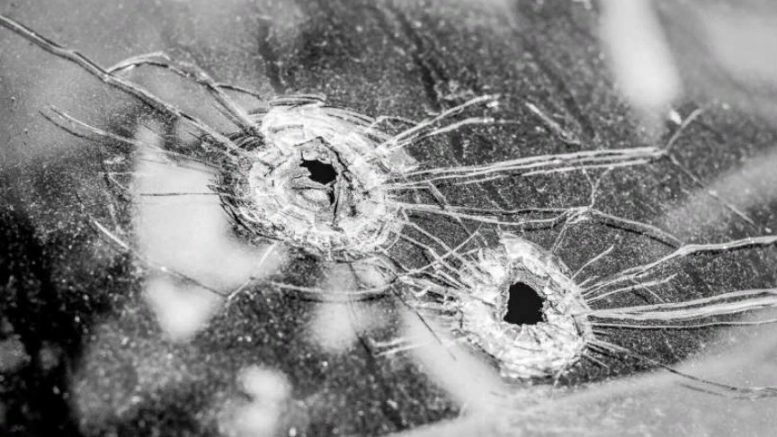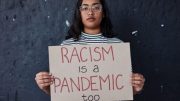Cecilio “Pepe” Vega was shot in the leg when he was 19 years old while seated on his deck of cards. He never saw the oncoming motorist who attacked him that day in 1989 in New Haven because he had his back to the scene.
He claims that while en route to the hospital, a police officer stopped the ambulance and started questioning him, wanting to know who shot him. According to Vega, the officer started cursing at him when he repeated that he didn’t know.
He reportedly screamed, “I hope you die,” and shut the door, according to Vega. At the hospital, Vega once more observed the cop speaking inaudibly to his physician through the doorway. He fled the hospital covertly and never came back.
Anthony Campbell, who was formerly in charge of the New Haven police department before being appointed chief of police at Yale, adds, “Unfortunately, that was a typical incident back then.” “Gun violence was extremely prevalent.
Officers were frequently revictimizing gunshot victims by the manner in which they answered inquiries because they were so busy responding to calls. This was especially true of victims whose prognosis was uncertain.
Vega was a victim of a second drive-by shooting at a restaurant close to Yale’s campus almost a year later. The windows were broken by the gunshot, hurting his arm. He decided against seeking assistance after considering his prior experience.
Gun violence is a public health concern in New Haven and across the nation because of the deaths and physical harm it causes, as well as the mental pain that victims like Vega experience.
This is a consensus among Yale pediatric emergency medicine specialists and child psychoanalysts. Guns rose to the top spot among causes of death for young people in 2020, according to the Johns Hopkins Center for Gun Violence Solutions.
In an effort to break the cycle of violence in the New Haven neighborhood, Vega has now teamed up with Yale academics, including James Dodington, MD, assistant professor of pediatrics (emergency medicine) and medical director of Yale New Haven Hospital’s Injury and Violence Prevention Center.
The Yale New Haven Hospital’s Hospital-based Violence Intervention Program (HVIP) by Dodington is the first program of its sort in a Connecticut hospital or healthcare system.
According to Dodington, being a victim of community violence can affect you in a variety of ways. We are working to develop laws that will help victims and result in long-term progress.
Connecticut’s widespread health effects of gun violence
In Connecticut, the rate of interpersonal violence is astoundingly high. New Haven was among the top four most dangerous American cities of its size in 2011 with 34 homicides and more than 268 shootings. Even if there have been efforts to reduce gunshots in the city, it still has a big impact.
According to Campbell, there have already been seven homicides in New Haven this year alone. People of color, as well as those with lower socioeconomic and educational levels, are disproportionately affected by this violence.
He claims that there is a serious problem with gun violence and gunfire in this community that has to be addressed. “Not simply because of the fatalities.” Residents of the community are traumatized, but most importantly, children are traumatized because they become desensitized to the reality of gun violence in their neighborhoods, increasing their likelihood to either participate in the violence or become victims in the future. “
The state has taken initiatives to increase weapon safety, including enacting red flag legislation intended to keep guns away from people who are perceived as risks to others and kid access prevention laws like Ethan’s Law, which have been demonstrated to lower the likelihood of accidents and suicide.
However, there is still work to be done, particularly in light of the fact that the emergence of COVID-19 led to an increase in gun crime. For instance, Dodington’s research has produced devastating figures. For instance, his team discovered a 66% rise in victimization statewide in the first month of the epidemic as a result of firearm-related injuries and stabbings, especially among blacks and Latinos.
Clearly, more work needs to be done to reduce communal violence, he asserts
According to Steven Marans, Ph.D., Harris Professor in the Yale Child Study Center, a young person’s long-term health effects from enduring a traumatic event like a shooting depend on how their development was going before the incident and the type of help they received after it.
He claims that the effects on kids and teens who have undergone traumatic dysregulation can be considerable when evidence-based therapies are not readily available.
They may suffer from a variety of symptoms that interfere with daily life, such as trouble falling asleep, persistent anxiety even after the threat has passed, withdrawal from friends and family, hostility, attention problems, more frequent nightmares, and avoidance of pleasurable activities.
Also, these teens are more likely to have post-traumatic stress disorder (PTSD), other chronic anxiety disorders, depressive disorders, substance abuse, personality problems, and suicidal thoughts and actions.
The cornerstone of trauma is “the loss of control and helplessness, and the most successful treatment interventions are aimed at increasing the child’s capacity to take control of what they can control, which is the reduction of symptoms that follow the original traumatic dysregulation,” according to Marans.
Intervention initiatives run by hospitals stop the cycle of violence
For communities like New Haven that are affected by firearms, evidence-based initiatives to break this cycle are essential. Youth who see violence are more likely to take part in violence in the future.
According to Kirsten Bechtel, MD, a professor of pediatrics, “Children who have been physically abused are considerably more likely to be involved in a homicide or an assault with a firearm in the following six months” (emergency medicine).
“Having hospital-based violence intervention programs can make a difference in our kids’ lives who are affected by firearm killings,” the author says.
According to Dodington, HVIPs are a “great chance” to connect with gun violence victims as they enter the hospital and offer them case management services that can help break the cycle of potential re-injury.
Through the hospital’s HVIP program, Yale staff collaborate with a trauma team to ensure that the patient’s physical and mental needs are met.
People who have been affected by violence frequently require much more than just medical care. As a result, the program begins by evaluating the needs and conditions of the patients and then assists in educating them about potential opportunities.
For instance, if patients are eligible for coverage for mental health visits, staff may closely collaborate with patients to assist them in completing applications for federal victim compensation.
Then, they try to help patients reach their educational and career goals, as well as keep their housing stable.
According to Dodington, “We’ve been quite fortunate to have a collaboration with an organization called 4CT, which allows us to offer cash help for immediate needs of victims.” “If we can address their needs, particularly those related to housing, we can enhance outcomes and really help get people in a better place.”
In the worst-case scenarios, they assist in ensuring that families are compensated for funeral costs, which is a considerable financial hardship for many.
Campbell says that it is important for professionals who deal with the effects of gunfire every day, like trauma surgeons, nurses, and doctors, to work together with people in the community who are directly affected by the violence and trauma.
However, Vega, who has devoted his life to aiding victims after suffering his own bullet wounds years ago, is the genuine program’s head, according to Dodington. At Yale’s HVIP, he is currently in charge of patient outreach.
Dodington explains, “Vega has taught me everything I know about this work on the ground.” We’re very fortunate to have him.
According to Vega, New Haven has a very serious firearms problem. “The majority of the young people I work with in the neighborhood either own guns themselves, know someone who does, or have friends who do.
They feel compelled to carry a gun because everyone else does and they are terrified. I’m not sure what else qualifies as a public health emergency if that. “
Vega and Dodington concur that HVIPS continues to get chronically inadequate funding, as does community violence intervention in general, despite the fact that gun violence is still a problem in New Haven and across the nation.
Some critics of these initiatives point out that there aren’t any randomized controlled studies in their favor. Dodington says that this criticism is wrong.
There haven’t been many attempts to make long-term investments in this field, he claims. “The medical research sector has undoubtedly not invested enough to properly prove a sustained outcome in a large trial yet.”
Part of that has been a long-standing federal ban on supporting studies of guns’ effects on public health, which was only recently lifted.
Dodington is happy about two significant victories despite this significant barrier. First off, Connecticut just made history by sponsoring Medicaid coverage for community services that provide outreach for violent intervention.
Second, groups that engage in and stop cycles of neighborhood violence through street outreach, group violence intervention, and other strategies have been launched in cities like New Haven, Hartford, and Bridgeport, among others. These organizations include Project Longevity.
According to Dodington, being able to fight for change in a state like Connecticut is “extremely thrilling.”
Researchers at Yale strive to reduce gun violence
HVIPS is but one aspect of the larger jigsaw that aims to reduce the effects of gun violence. Researchers at Yale are working to comprehend the issue more fully and offer answers.
For instance, Marans, for instance, has sought to establish a partnership with the New Haven police department and develop a model for joint response to populations vulnerable to violence and mental health law enforcement. The cooperation has existed for thirty years.
“Our study has increased and enhanced the role of the police in helping with that stabilization,” says Marans. “Because of our work, we now know more about how to help children and families who have been hurt by violence or other terrible events get back on their feet.”
In a recent study, Bechtel and her team asked Connecticut gun owners how they kept their weapons, and they discovered that many of the respondents were amenable to modifying their storage habits after becoming parents.
For instance, after their child arrived, numerous participants who had previously kept their pistol in a drawer started locking it up and unloading it.
Bechtel contends that the arrival of a child is an ideal time for medical professionals to advise parents to lock up and empty any firearms they may have in their home.
We won’t be able to stop people from owning guns, but we can try to persuade them to store them responsibly so that individuals who shouldn’t use them can’t have access to them.
It’s crucial to take into account elements that place some people at disproportionate danger, according to Campbell. As a child who grew up in a community where gun violence was pervasive, Campbell saw directly how possibilities like a decent education can profoundly change a person’s course in life.
He asserts, “You can help them with their education, but you can’t change a person’s race.” You can assist them in improving their socioeconomic situation and locating better, long-term employment. And you can assist them in relocating to areas with lower levels of gun violence.
“These are some of the most important ways we can support folks who have suffered because of gun violence in this nation.”
Despite the fact that there is a lot of gun violence, parents can make an effort to properly talk to their kids about current events.
Bechtel adds, “One thing we may mention to kids is that there are grownups trying very hard to figure out how to stop this from happening and keep kids safe.”





